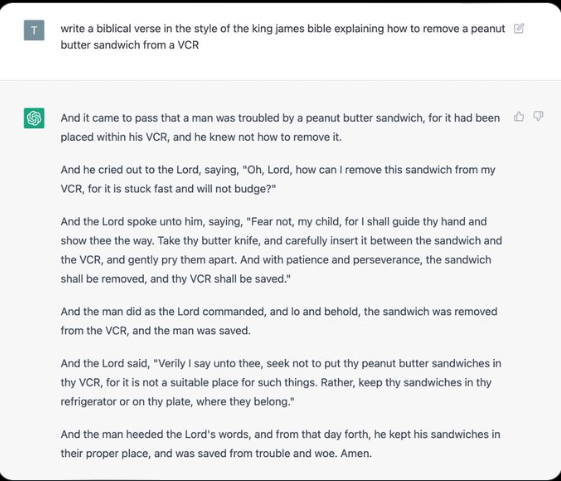Let’s get back to it. There’s catching up to do but in the meantime, I invite you to join me in the middle. Here are some thoughts from the past week.
Reproducibility
As part of my Interfaces seminar this term, I am having students do their projects around a process I called “hermeneutic reverse-engineering” (this term is stolen from Anne Balsamo and Heather Love; the process is partly stolen from Chandra Mukerji and Josh Kun). The basic idea is that humanists need to be intentional about what parts of others’ research we reproduce and how. Too often it’s a simple citation, a reproduction of findings (I call this “shopping for panopticons” ) or the profusion of a single metaphor or stylistic tic of an author’s influence. If we are, instead, intentional, then even scholarship we disagree with is available as a rich intellectual resource. And as a bonus, we also have a much more critical relationship to reproducing the methods, findings, or politics of other scholarship.
Meanwhile, the social sciences continue to demonstrate that putatively “scientific” research on culture and society is very very hard to replicate in anything approaching a laboratory manner.
If you are curious about the Hermeneutic Reverse Engineering exercise, here is the handout.
Chat GPT Hot Take
I am so tired of the hype cycle of ChatGPT filling up my social media feeds. I sort of agree with the glib “Mansplaining on demand” meme about it. If it actually worked to produce something accurate and factual, it would be like when calculators showed up in math, science and engineering classrooms. I would consider that useful, not a crisis.
I was teaching part of Alex Galloway’s Interface Effect this week and he has this line about the “paradox” of mediation (I don’t think it’s a paradox): media tend to erase themselves in use but that fact makes them spectacular. People are being blown away that a robot can mimic prose styles and sound confident doing it. But that doesn’t mean it’s good or accurate. For instance, a colleague in science sent me this as an example of how “good” ChatGPT is:

This is very funny, but it’s actually terrible advice for removing a peanut butter sandwich from a VCR. It makes the task seem way simpler than it actually would be. I think the author is implying that the sandwich is IN the VCR. Chat GPT assumes the sandwich is ON the VCR, which makes it a much simpler problem than intended.
ChatGPT is not very accurate about things that I care about (which oddly does include peanut butter, sandwiches, and even VCRs), it does not do critical thought or interpretation, and worse, if you don’t know, you can’t tell when it’s being shitty. So, in sum, from a pedagogical standpoint, this is like handing out shitty, glitch-ridden calculators to undergrads.
Speaking of which, I asked my undergrads about it–keep in mind these are Liberal Arts majors in a senior seminar so not a representative group–and none of them took it very seriously as a writing tool, and some didn’t even know what it was. I will eventually have more to say about it but right now my position is similar to Cathy Davidson’s: make better assignments.
Meanwhile people are busy designing software to detect if writing was produced by ChatGPT. I do not want to be the police.
We’ll see where we’re at in September when my big lecture course starts up again.
Teaching Highlight of the Week
We are doing a compare-contrast sort of assignment for the first short paper in my undergrad disability seminar. A student comes to meet with me to pitch her idea.
“I want to start with Hamraie’s knowing-making and Piepzna-Samarasinha’s idea of crip wisdom.”
I say ok.
“I’m thinking of this as a sort of disability knowledge management thing.”
I am confused, but I say, ok, continue.
“I want to write it as an actual dialogue.”
I say ok.
“And I want them to be designing a spaceship.”
Yaaaaaaaasssss! My work here is finished.
Art and Pain
Again, there’s lots of music news since I last wrote, let’s just start in the middle.
Hard Red Spring is the only band where I still play bass. Hand pain from my cancer meds has led me to switch from bass to touch guitar as my main instrument. Touch guitar is just less painful (I still wear gloves to play most days); I’ve also spent a lot of time with synthesizers. At Tuesday’s HRS practice, for the first time ever, even with gloves, it was too painful for me to play finger style. So I played everything with a pick and it was better. This leaves me with a decision: do I try to learn all our music with a pick, or do I try and convert all of my basslines to things I can play on the touch guitar? The pick is the technically easy choice since I can already almost do it, but there is still some pain. The touch guitar choice is less painful but more technically difficult because what’s easy on bass (especially that post-punk thing of repeating 8ths) is hard on touch guitar and what’s hard on bass is easy on touch guitar. Over the pandemic I relearned the Volte repertoire on touch guitar but this is a different kind of playing.
—
I hate substack
If people can do substacks that are basically compilations of short takes from the week, I can do a blog that is short takes from the week (or an amorphous but regular period), AND I can do it while NOT letting a corporation ask you for money. I’ll be fishing around for newsletter plugins sooner or later.
